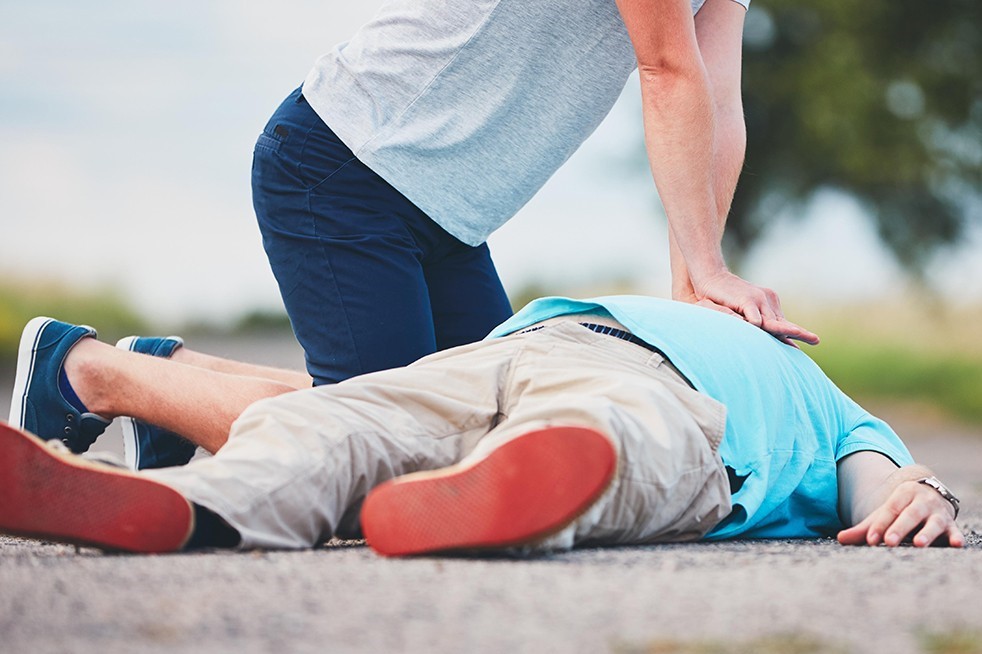
Argon gas saves neurons after cardiac arrest: tested on the world's first patient at the Policlinico di Milano
The effects of Argon. A simple gas could radically change the prospects for recovery in people in cardiac arrest: a gas that would be able to preserve the patients’ brains as much as possible, greatly limiting neurological damage and significantly improving the recovery of cognitive functions
A special study is underway at the Policlinico di Milano to demonstrate this, and the world’s first patient has just been treated with Argon gas
He is a man of about 60 years old, who after a week of hospitalisation has already returned home in perfect condition: statistics, on the other hand, say that in Italy only 8% of patients survive a cardiac arrest without serious neurological outcomes or disability.
The idea of using Argon to treat patients in cardiac arrest has been the subject of scientific studies since 2012 and was born thanks to Giuseppe Ristagno, an anaesthetist at the Department of Anaesthesia-Riimation and Emergency Care directed by Antonio Pesenti, who has also been working with the Mario Negri Institute for some time.
Ristagno developed the first insights on Argon together with Silvio Garattini and Roberto Latini of the Mario Negri and initiated animal experiments, in which several very promising results have already been demonstrated.
Now, after 10 years of scientific research, it has finally been possible to start human trials: and the first data already seem to confirm the validity of the idea.
Argon in case of cardiac arrest: Prof. Ristagno’s explanation
‘After a cardiac arrest,’ explains Giuseppe Ristagno, who is also Associate Professor of Anaesthesia at the State University of Milan, ‘there is a serious lack of oxygen which, among other things, endangers our neurons, sending them immediately into distress.
In our studies on animal models, we saw that the mortality rate after cardiac arrest was 70%; treating subjects with Argon gas, however, the percentages were reversed: 70% of the animals survived, and with complete neurological recovery.
This is another reason why it is extraordinarily important to have started testing Argon on humans: if confirmed, this new technique has the potential to revolutionise the treatment and outcome of cardiac arrest’.
Argon’s name derives from the Greek word ‘argos’ meaning lazy: it is in fact an inert gas, i.e. it is extremely stable and reacts unwillingly with other chemical elements
It makes up almost 1% of our atmosphere: it is therefore very abundant in nature and extremely cheap to use.
But if it is so inert, how does Argon protect neurons?
‘It has been discovered,’ continues Ristagno, ‘that this gas actually has a direct action on the membranes of the mitochondria, which are the ‘energy powerhouses’ of all our cells.
When there is a shortage of oxygen, the mitochondria in neurons are the first to suffer, subsequently leading to the death of the cells containing them.
Argon, on the other hand, seems to make the mitochondria more resistant to temporary oxygen deficiencies: in practice, it protects the neurons and buys them precious time, so that they can overcome the consequences of cardiac arrest as unscathed as possible’.
The study that has just begun at the Policlinico di Milano is a Phase I-II: there are four phases for the authorisation of a new therapy, and they all normally take several years together.
For the next few months, the experts will use this gas on 50 well-selected patients, to demonstrate the feasibility of this innovative treatment as well as to investigate its efficacy.
“The idea is to continue the study also in collaboration with other facilities, to accelerate the recruitment of patients and to verify the effectiveness of this therapy: we expect on humans an improvement in neurological recovery of up to 40%, compared to untreated patients.
‘Our job is to bring basic research to the patient’s bedside,’ concludes Ezio Belleri, General Director of the Policlinico di Milano, ‘and this study really demonstrates this.
The impact of cardiac arrest on the patient, his or her family, and on the health and social system is enormous: not only because of the costs linked to the long hospitalisation, the consequent disabilities, and the long-term therapies.
But also because the whole family is overwhelmed in its daily life, with a considerable cost also from a psychological point of view.
In Italy there are 60 thousand cardiac arrests every year: therefore, being able to protect the brain as much as possible from such serious damage can radically change the prospects of treatment for an event that is unfortunately still very common’.
Read Also:
Emergency Live Even More…Live: Download The New Free App Of Your Newspaper For IOS And Android
Heart Disease: What Is Cardiomyopathy?
Inflammations Of The Heart: Myocarditis, Infective Endocarditis And Pericarditis
Heart Murmurs: What It Is And When To Be Concerned
Broken Heart Syndrome Is On The Rise: We Know Takotsubo Cardiomyopathy
What Is A Cardioverter? Implantable Defibrillator Overview
‘D’ For Deads, ‘C’ For Cardioversion! – Defibrillation And Fibrillation In Paediatric Patients
Cardiomyopathies: What They Are And What Are The Treatments
Cardiomegaly: Symptoms, Congenital, Treatment, Diagnosis By X-Ray


